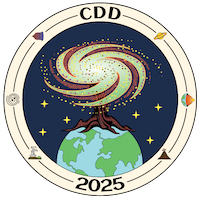Orateur
Description
Highly concentrated geogenic CO2 emissions have been reported worldwide. Although atmospheric dispersion is most common, specific topographic and meteorological conditions can lead to surface accumulation in the form of “CO2 rivers”. While catastrophic events, - such as the deadly limnic eruption of Lake Nyos in 1986, are well documented, the behavior of these CO2 rivers remains poorly understood, posing challenges for risk assessment and mitigation. Although computational models such as CFD and integral models provide analytical insights, their practical application in risk management is hampered by computational cost and accuracy constraints. To address these limitations, we simulate the behavior of CO2 rivers by using the depth-averaged numerical model TWODEE which provides a computationally efficient alternative for simulating dense flows. TWODEE is based on shallow-layer continuity equations, where negative buoyancy drives the cloud dynamics, causing it to settle into a low-lying configuration. External physical forces are included in the form of three empirically parameterized terms: turbulence induced by terrain roughness, turbulence associated with atmospheric convection, and shear stress at the atmosphere-flow interface. To improve predictive capabilities, we rely on an integrated approach that compares simulation results with experimental results from analog laboratory experiments and field data collected at CO2 degassing sites. In analog experiments, high-density salt water is injected turbulently into a tank of lower-density fresh water and onto a rough and sloped surface. The volume flow rate, the slope angle and the surface roughness vary between each experiment. The recorded images allow the measurement of frontal and extensional velocities, which are then used to calibrate the model parameters. The model is tested at the Syabru-Bensi Hydrothermal System (SBHS) in central Nepal, where high seismicity and significant CO2 degassing have been reported. In the field, at each measurement point, the airborne CO2 concentration and the wind velocity and direction are measured at 0, 50, 150, and 300 cm above the ground, and the surface CO2 flux is measured using the accumulation chamber method. Our results suggest a refined set of model parameters that are consistent with previous studies. In addition, we assess the impact of the 2015 Mw 7.9 Gorkha earthquake, which triggered both the emergence of additional CO2 degassing vents and changes in CO2 flux across the SBHS. This work aims to improve our understanding of the dispersion of dense gases in the lower atmospheric layers. By quantifying the budget of CO2 rivers in different geodynamic contexts and estimating health risks in both volcanic and non-volcanic environments, this work lays the foundation for an operational hazard assessment tool with potential applications in real-time risk management.
| Speaker information | PhD 2nd year |
|---|

